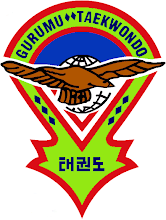 The Korean Martial Art of TAEKWONDO was created by the late General Choi Hong Hi, (1918-2002) Founder of the International Taekwondo Federation. It was created by combining movements of Japanese Karate and the traditional, but crude, Korean martial arts of Soo bak Gi and Tae Kyon. Through extensive research and testing, Taekwondo has evolved into one of the most beautiful and effective martial arts in the world. Today, it has become one of the most popular martial arts in the world because anyone regardless of age, gender, or size can benefit from its training. Taekwondo offers a wide array of physical and mental benefits for both young and old. It is also an activity that parents can participate in with their children and use to strengthen family bonds. Lastly, Taekwondo promotes peace. The philosophy of Taekwondo can be summed up by the following tenets:
The Korean Martial Art of TAEKWONDO was created by the late General Choi Hong Hi, (1918-2002) Founder of the International Taekwondo Federation. It was created by combining movements of Japanese Karate and the traditional, but crude, Korean martial arts of Soo bak Gi and Tae Kyon. Through extensive research and testing, Taekwondo has evolved into one of the most beautiful and effective martial arts in the world. Today, it has become one of the most popular martial arts in the world because anyone regardless of age, gender, or size can benefit from its training. Taekwondo offers a wide array of physical and mental benefits for both young and old. It is also an activity that parents can participate in with their children and use to strengthen family bonds. Lastly, Taekwondo promotes peace. The philosophy of Taekwondo can be summed up by the following tenets:Courtesy (Ye Ui)
Integrity (Yom Chi)
Perseverance (In Nae)
Self Control (Kuk Chi)
Indomitable Spirit (Beakjul Boolgool)
The goal of all Taekwondo students is to incorporate these tenets into their daily lives’.
The ideals Taekwondo aims to achieve are evident in its Oath:
I shall observe the tenets of Taekwondo
I shall respect my instructor and seniors
I shall never misuse Taekwondo
I shall be a champion of freedom and justice
I shall build a more peaceful world
ASPECTS OF TAEKWONDO
MEDITATION: This is performed at the beginning and end of each session. The purpose of meditation at the beginning of the class is to allow the student to focus on the upcoming task. The mind must be cleared of all outside thoughts, concerns, and responsibilities. This is essential in preparing for a class which will be both physically and mentally draining. Meditation is also performed at the end of each class in order to allow students to visualize themselves executing the techniques they have just learned. This visualization process is very helpful for the perfection of techniques at all levels of training.
MEDITATION: This is performed at the beginning and end of each session. The purpose of meditation at the beginning of the class is to allow the student to focus on the upcoming task. The mind must be cleared of all outside thoughts, concerns, and responsibilities. This is essential in preparing for a class which will be both physically and mentally draining. Meditation is also performed at the end of each class in order to allow students to visualize themselves executing the techniques they have just learned. This visualization process is very helpful for the perfection of techniques at all levels of training.
PATTERNS: These are a series of pre-arranged kicks, blocks and strikes executed in succession against a variety of imaginary opponents. The purpose of the patterns is to develop balance, breath control, coordination, power and technique. In these patterns lies the true beauty of Taekwondo - combining power and grace. There are twenty-four patterns in Taekwondo and these patterns range from 19 to 68 movements each. The novice learns one pattern at each belt level.
FREE SPARRING: This aspect of Taekwondo places one or more students against one another with the purpose of improving distance, timing, balance, speed, and strategy. Here the students are allowed to execute a variety of kicking and hand strikes and blocks against one another. The goal is to overcome their opponent with well-executed techniques stopped just short of the body.
SELF-DEFENSE: Taekwondo provides students with an excellent method of self-defence. It enables them to defend themselves against an attacker from a distance as well as up close. By utilising the many kicking techniques available, the Taekwondo practitioner can prevent an attacker from grabbing or striking them. If the attacker is able to grab them, then there are a variety of self-defence techniques, which include pressure points, wrist - locks, joint locks, and takedowns that the student can utilise. Therefore, a well - trained and conditioned student will feel confident and prepared to defend themselves in any situation.
BREAKING: The purpose of breaking is to enable the Taekwondo student to develop focus, power, concentration, and distance while performing the proper execution of a strike. Breaking also allows the student to see the amount of power they are capable of developing through the training. Pine wood, ten inches in diameter and one inch thick is used for power breaking.


No comments:
Post a Comment